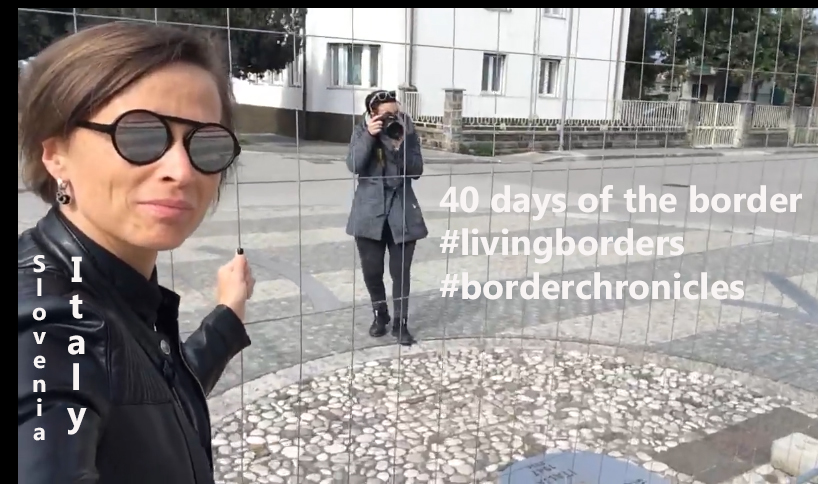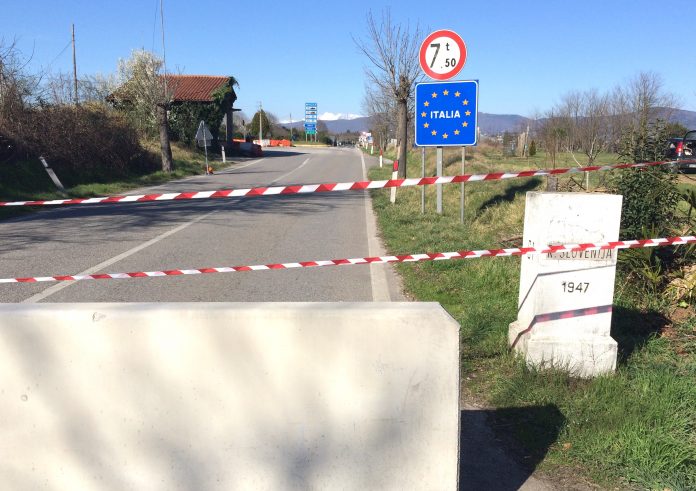By Svetlana Buko
This spring and then summer have brought about many tangible and psychological changes to the lives of people around the globe due to the pandemics. Our cross-border region of Italy and Slovenia lived through the quarantine in its own special way. The Italian city of Gorizia and the Slovenian city of Nova Gorica are united by the years of history and threads of memories from different generations.
A few hundreds of kilometers of the Italian – Slovenian border in the Alps-Adria region have a rich, multi-layered contested history, sometimes referred to as the southern part of the iron curtain separating western capitalistic democracies and former socialist world. Many locals still remember Yugoslavian history, border control checkpoints, rules and challenges.

Quite a bit of time has passed since Slovenia joined the EU in 2004 and Schengen in 2007, and the realities of the cross-border life have evolved: people cross the border daily for work, pleasure, sport, and education. On the Slovenian side, many businesses (casinos, gas stations, shops, and restaurants) work mainly with Italian clients.
Cross-border daily life means living in Slovenia and working in Italy, living in Italy and shopping in Slovenia. Children go to schools and sport centers across the border; many own properties (apartments, farmlands, vineyards) on both sides.

For many years the state borders of the two neighboring countries remained practically invisible: with a few remaining checkpoint buildings either converted into museums or into community or art centers – the milestones preserved for tourists by the careful history museum leaders who made an effort to keep the memories alive.
When Italy became the red zone due to COVID-19 epidemic, Slovenian central government evoked the control of the national border for safety reasons. There were a lot of local questions raised related to the new uncertain realities: how were decisions made to close and open borders? How would the new control be implemented at checkpoints? What are the evolving perceptions of us vs. them on both sides of the border?
Then the fences were up again with restrictive signs everywhere- on the cycling paths, pedestrian walks, and park alleys. The first week was the week of surreal silence and whisper of fear and uncertainty. Physically divided space of Gorizia – Nova Gorica reminded all locals of when they crossed that border on foot, by bicycle, or jogging without thinking about crossing the border of another country. Physical border started to shape perceptions, comments, discussion and feelings of locals on both sides, registered in the social media posts, newspaper stories and TV footage.

Eventually, regional organizations and leaders found a way to communicate about the closed borders, reiterate collaboration efforts and encourage the locals on both sides of the border. Mayors of Gorizia (Italy) and Nova Gorica (Slovenia) met on the common square connecting the two cities, made a unification statement while talking over the border fence. Both leaders reiterated that what is decided in the capital cities – Rome and Ljubljana- has a direct impact on the daily life on the border, but locally people experience divisions in a different, more personal way.
Community leaders prompted different groups of people into action: artists and activists found a way to connect across the border with flowers, photos, letters, children’s drawings, and musical concerts, joint sport training activities on both sides of the border (many events were organized by the Go2025 team of enthusiasts, aiming for the Candidacy of the EU Capital of Culture).
It’s amazing that amidst all the finger-pointing and grumbling about whose fault the closure was (or whose fault the pandemic is), local people made daily effort to stay connected and friendly.
For anyone who is teaching or researching cross-border life or intercultural communication like myself, it was a unique time and place to be. These materials can serve as a collection of case studies for analysis, reflections, learning and growth.






























Grateful for the opportunity to reflect about the life on the border. Austrian colleagues from the southern part of the tri-border region also were interested in the “outsider observation” perspective. For anyone interested in the Sietar Austria – here is a 37 min zoom eposide Thriving Thursdays – June 4 2020 about the same topic: ” https://www.youtube.com/watch?v=Lm_ghpqPOuk